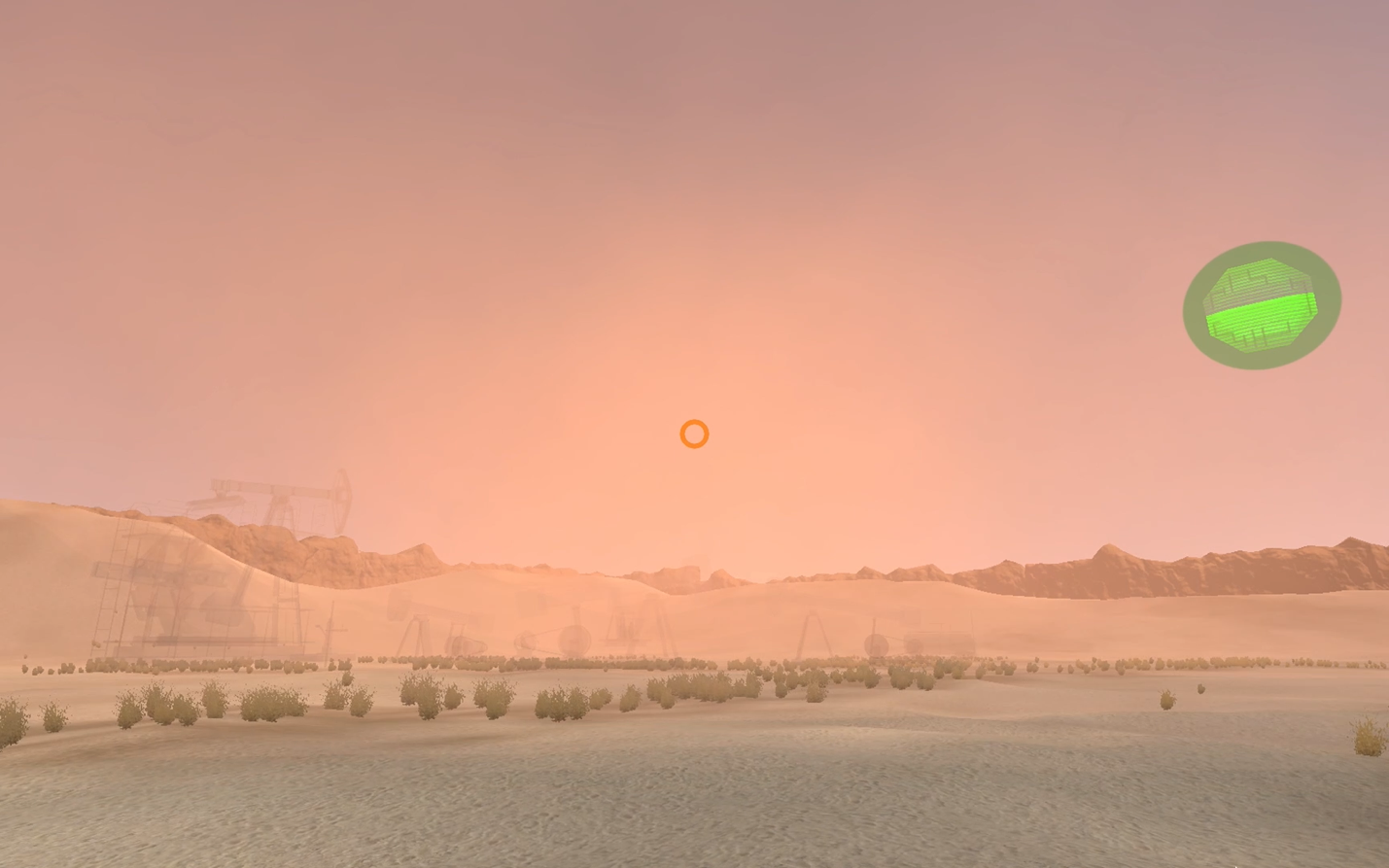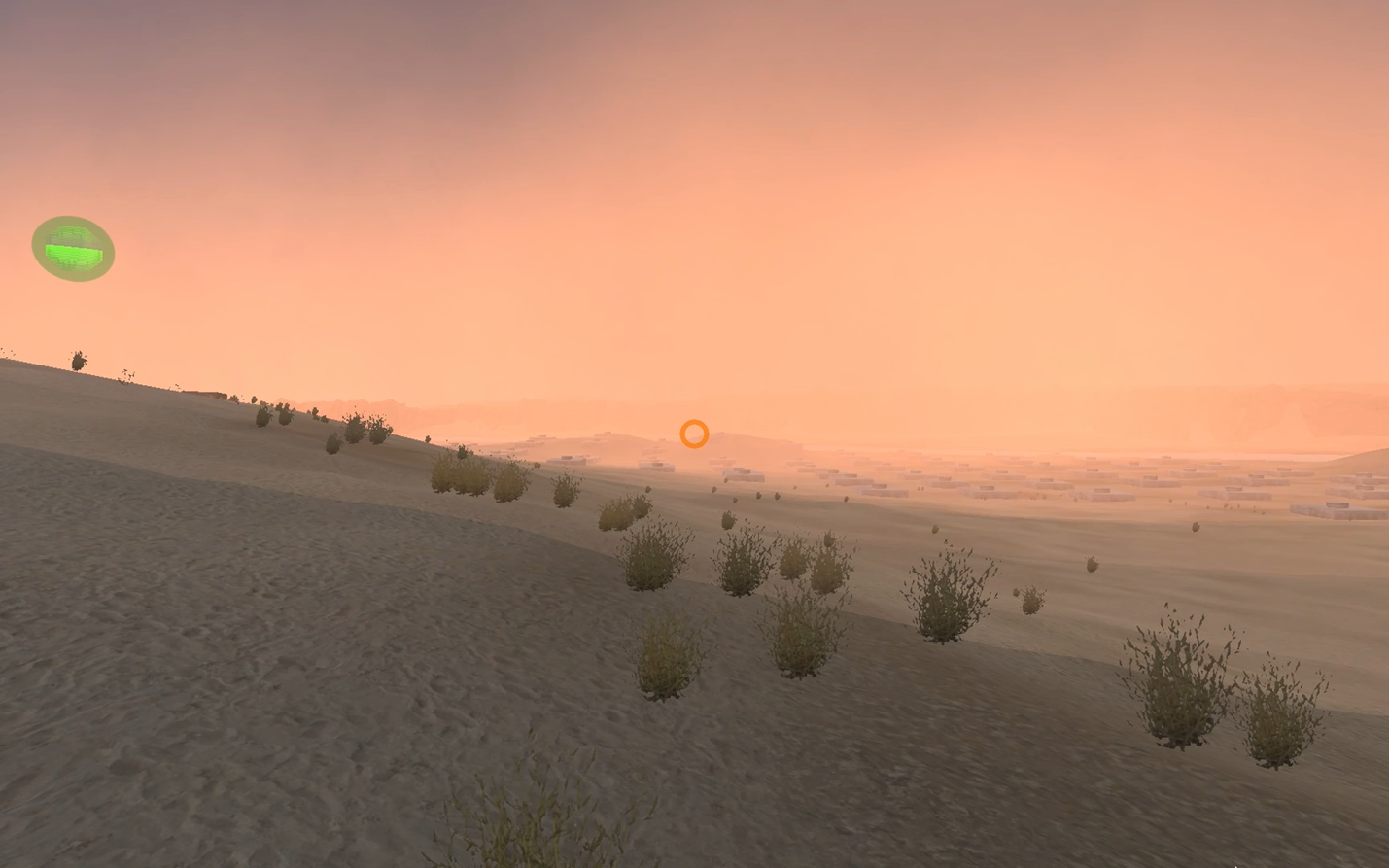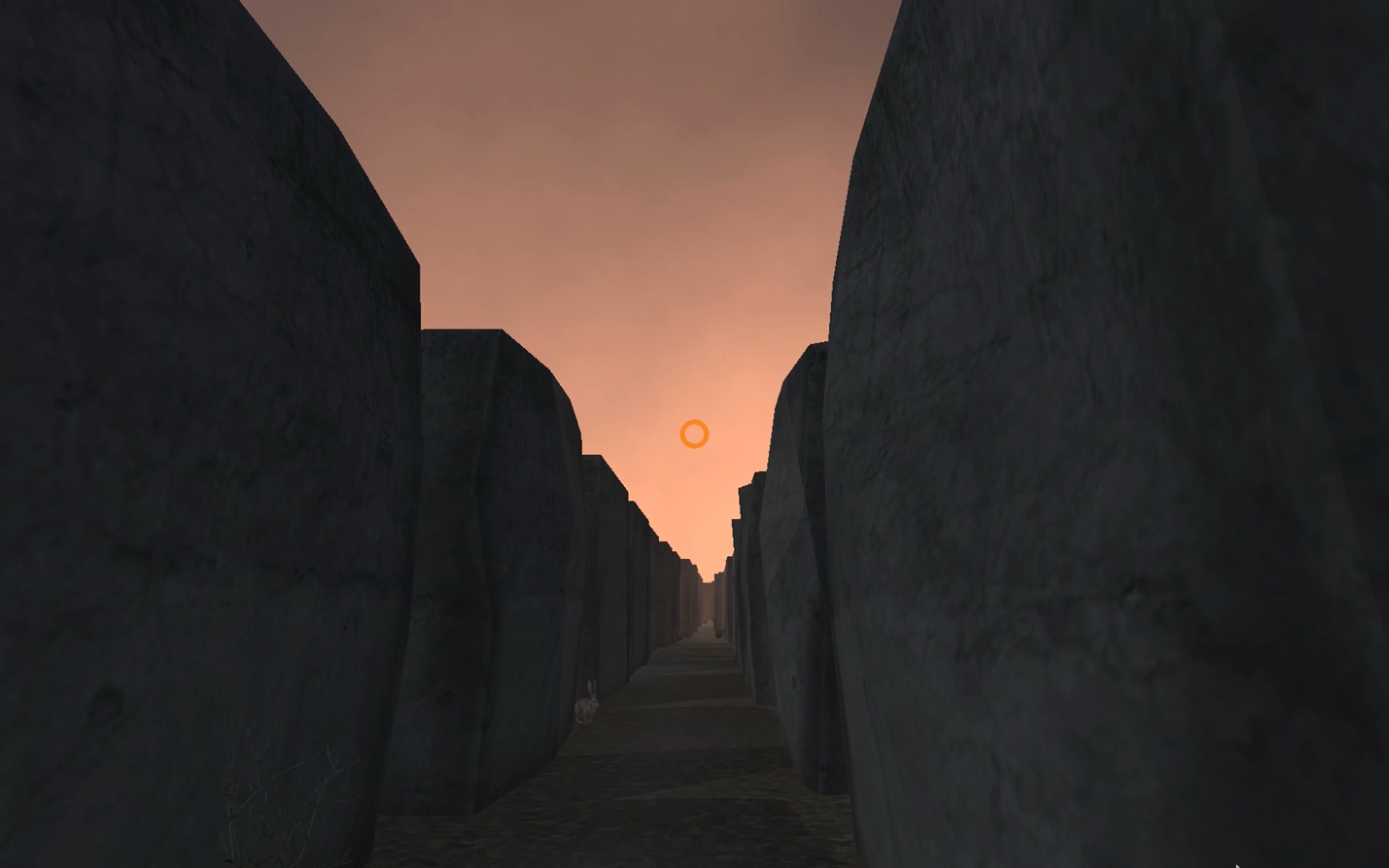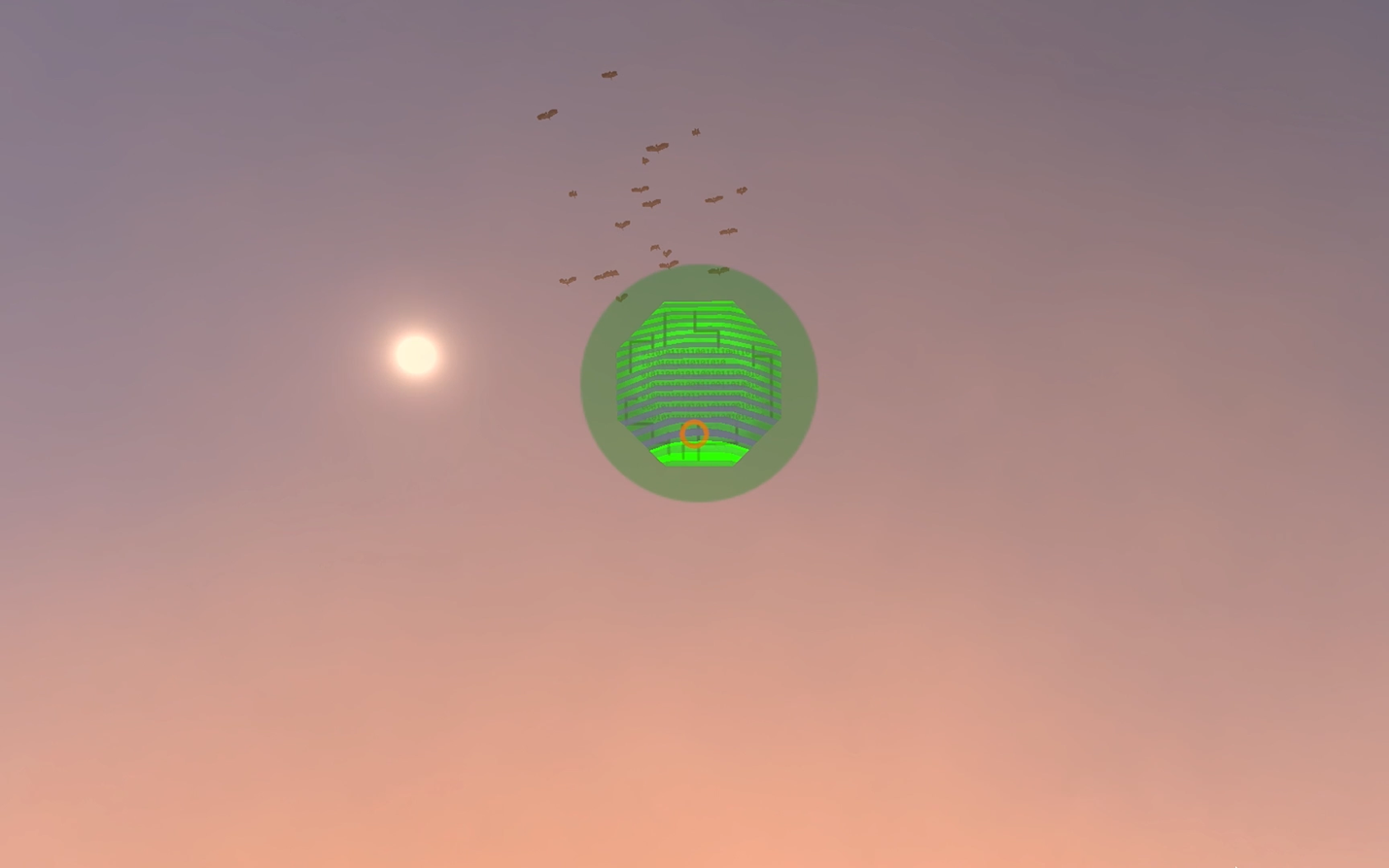Poetry's Social Forms
all that you touch you change
all that you change changes you
[ . . . ]
During this "Dim Age" governments defined parts of the North American Southwest as zones of sacrifice for future liberation. Experimental landscapes for a progressive society. Proceed with caution, half-life of toxic materials 24,000 years.

We begin with the land running under our feet and beyond our purview, stretching out seemingly forever. I don't want to make assumptions because the game doesn't. The idea that we have feet I indicated for the sake of convenience. Only "vision" is alluded to initially. Let's take it out, the feet. We're a floating vantage point. A voice speaks to and around us:
Location unknown. Population no longer assessed.
Vital food sources: agave mescal, tornillo, grass seed, piñon, acorn, walnuts, cactus fruit, sage, tobacco, radiosa sotol.
Immediate area desolate, arid with no signs of vegetation, wind is unrelenting, accelerating erosion, impairing vision.
Encadenar is a virtual reality game set in an unfixed future time near the Waste Isolation Pilot Plant (WIPP) in Carlsbad, New Mexico. The game was produced by Carlsbad artist Mateo Galindo and exhibited at Hunter College in 2018 with the eventual aim to bring the work to schools, alternative arts spaces, and other sites, especially in the southwest. The artist invites users to participate in a semi-guided, semi-autonomous walk through a constructed landscape, a world ordered by voice-over narration that takes the form of a prose poem. Occasionally, the poem speaks to you, the viewer-listener. Occasionally, the poem speaks to itself. Occasionally, the poem speaks for its world, or speaks — constructs — its world. Occasionally, it sounds out to no one and for no one in particular, leaving "you" entirely wanting, despite being fully integrated in the game's virtual universe.
I'm already coiled into the virtual world of Encadenar and its antecedents. Where we touch or don't touch is what I'd like to discuss. The question is how can we think about poetry as a social form. I'm seeking answers: what are poetry's social forms, if poetry could possess or exemplify such things. I remind myself, let's not pan for gold. (Is colonial.) (Makes for bad sex.)
I'm interested in the role (or lack) of touch in the work, as something like "touch" seems produced as a question by the poetic elements of the voiceover. The visual universe of Encadenar is immersive — in the sense that it produces a sense of surround. Moving through the space involves floating in a state of disembodiment, so any sense of the corporeal slowly melts away as the viewer floats in a landscape receding before forward movement. Without hands and feet, the viewer can only conceptualize "touch" by engaging a fantasy of total integration, such that contact occurs on the level of the particle, wave, or network. The poem's sonic qualities, coupled with the lack of body referent, prompt the user-listener to envision multiple forms of embodiment for themselves in the game, including the non-human. Playing, I happily find myself feeling kinship with a rock, invited to move in that mode as much as invited to proceed in relation to any other being or non-being — these external bodies and the language of a poem are my only subject-object references. Listening to the disembodied voicing recited for my non-body, I sense that contact in this universe is something more diffuse than that which is offered by the press of the button or the shake of a hand IRL. Soundscape is atmosphere, and here, touch is integration in a system.
In "On Touching: the Inhuman that Therefore I Am," Karen Barad draws on quantum field theory to describe the relationship between particles and the void, suggesting that it no longer makes sense to conceive of particles in the void, but rather to think of particles "entangled with it," which changes our concept of how touch works on a particle level. Barad acknowledges, "A common explanation for the physics of touching is that one thing it does not involve is ... well, touching. That is there is no actual contact involved. You may think you are touching a coffee mug when you are about to raise it to your mouth, but your hand is not actually touching the mug."1 Immersed in Encadenar, I grapple with the paradox of touching without touching. I begin to think of touch as diffusion. I start to see myself in gradient. And yet I know that many forms of contact produce violence. I know there is no ahistorical or apolitical relationship to this landscape — I grew up with stories about this site, have my own fraught relationship as a settler to its histories. I want to learn what modes of contact Encadenar produces, proliferates, as argument. Following Barad, I ask whether there is space between touching and — not. This question is social.

Assessing water. Rendering image. Water contents: high concentrations of brine, and unidentified substances. Not safe for consumption.
The vantage point offered by Encadenar, without the hint of a user's body, seems to facilitate what Traci Brynne Voyles calls "the false universalism of the modern colonial episteme, what Donna Haraway calls the 'god trick of seeing everything from nowhere.'"2 This is a problem the viewer's disembodiment seems to pose — at first. Information like "vital food sources," "water contents," and "wild animals within proximity include" suggest mapping and assessment, a cartographic relationship to land that privileges settler investment in exploration over other modes of relation, contact — or touch. Jodi Byrd, who has spoken about how code (on the level of both the social and the digital) operates within a gaming universe to reinforce settler colonial dynamics through the worlding of play, discusses the aesthetics of navigation within the Dark Souls series by describing that game as "an alienated world of violence that demands exploration tied to conquest to control space, advance past demonic creatures, and achieve dominance over terrain."3 In Encadenar, words like "assessing," "rendering," and even "substances" allow Galindo to hint at a mode of interaction that would seem to privilege the kind of "dominance over" that Byrd points to in the world she's examining, and we can understand the landscape view Galindo creates to be initially aligned with a viewpoint that encourages dominance through cataloging — the collection of data. But slowly, something changes.

The experience starts to become about feeling the residual tones, tenors, and affective surfaces produced by and through a construction of space that has left an area "wastelanded," or decimated by nuclear capitalism.4 A line of the poem reads, "global economies in the twentieth and twenty-first century depended heavily on the extraction of mineral and natural gas resources. . . . Soon [this place] became a destination for nuclear waste disposal." With this commentary the voiceover signals that any engagement with the landscape must account for the ways the space is constructed in the interests of power. The mode of play starts to demand movement through space with a knowledge (and critique) of the operational force and function of the settler imaginary.
This shift occurs through the strategic introduction of commentary such as the above and is brought home in a moment when the language in the poem moves away from the rhetoric of assessment into a language of critique, and finally into a line of open-ended questioning. The poem-as-voiceover asks, "Is this [place] the jewel of the north," reminding us that the landscape in view has already been constructed as both "jewel" and "wasteland" by a northern (settler) imaginary connected to an economy far from its location on a map but close in the ways proximities are reordered when land becomes of interest for development or development's remainders (waste). In Galindo's line, "of" is possessive, and "north" is beyond geographic — any number of entities stand to benefit from possession, which is dispossession. This shift takes us from language designed for settler "survival" in an unknown landscape to language designed for survival in another sense, contingent upon considered questioning and eventually upon a move away from certain modes of sense-making altogether. By asking the question, "Is this the jewel of the north?" the poem invites both responses: "yes" and "no." To answer "yes" is to enter into a space of critique, to acknowledge the inscription of a colonial imaginary upon the land and to name its social and material consequences. To answer "no" is to sit with something else: an opening onto a way of conceiving of space beyond the prescriptions of such an imaginary. No, this place is not the jewel of the north. This "no" has a kind of open-ended quality, because it speaks to an as-yet undermined futurity. Some kind of touch.
Who is the "I" and who is the "you" in the piece? Why is "you and I" set up against "many others"? We have a "you" in the form of a "Well Meaning Being," an example of many things: white tears, ambiguous longings for otherwise, elements of uncertainty or lack of fixity of subjectivity, a figure of the clasped "hands" of the material realities of extractivism and practices of insurgency, material, and aesthetic. Next to these dichotomies, we have a description of time as sediment: "So many different forms of time and so many means to compress them," recalling the compression in the failure to conceive of the "half-life of toxic materials 24,000 years." Even without comprehension I am instructed to "proceed with caution," reminded of the ways social dynamics formed in and through power are inscribed on people and the land such that we can talk. And so with Galindo we're situated in sedimentation of the tens of thousands of years of fallout — nuclear, but also social.
The piece returns again and again to emphasize ways of conceiving of space and moving in space that begin from the belief that despite near-totalizing settler intervention at the level of extractivist violence with quantifiable and non-quantifiable consequences, this and any space retains, sustains, and develops its qualities, histories, and forms of life and not-life not as settler "resources" but as entangled elements that signify outside of the colonial imaginary.

Daisy Atterbury is a fellow in the Andrew W. Mellon Seminar on Public Engagement and Collaborative Research at the Graduate Center, CUNY. She is the co-director of NM Poetics, an annual summer program for writers and artists in northern NM. She has publications forthcoming in Jacket2 and at ROOF, and has been featured in collections of artists' writings with Publication Studio Portland, the Swiss Institute and the Queens Museum. She's a contributing editor for Makhzin, a bilingual magazine dedicated to new and cross-genre writing based in Beirut, and she teaches creative nonfiction at Queens College, CUNY. More information about NMPoetics can be found at www.nmpoetics.com
References
- Karen Barad, "On Touching: the Inhuman that Therefore I Am," forthcoming in The Politics of Materiality edited by Susanne Witzgall (revision of Karen Barad, "On Touching—the Inhuman That Therefore I Am," differences 23, no. 3 (2012): 206-223).[⤒]
- Traci Brynne Voyles, Wastelanding: Legacies of Uranium Mining in Navajo Country (Minneapolis: University of Minnesota Press, 2015).[⤒]
- Jodi Byrd, "'Do they not have rational souls?': consolidation and sovereignty in digital new worlds," Settler Colonial Studies, 6, no. 4 (2015), 423-437.[⤒]
- Voyles, Wastelanding.[⤒]
